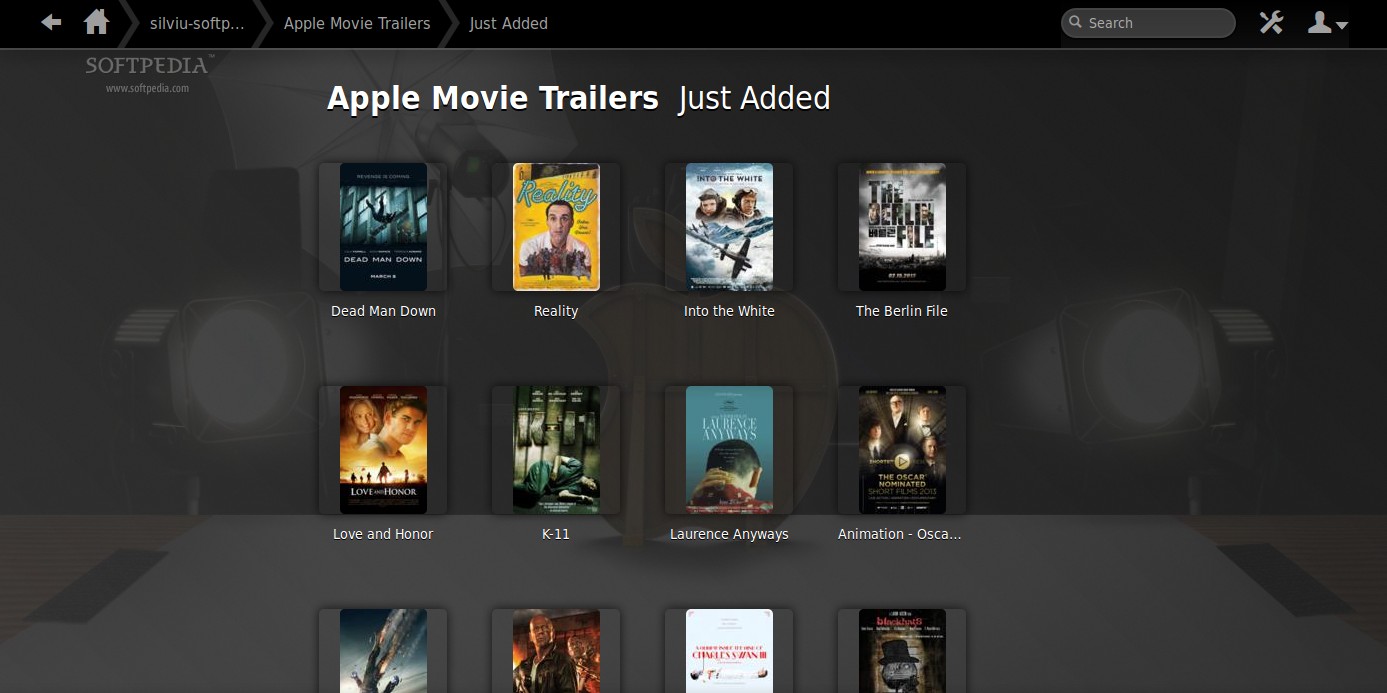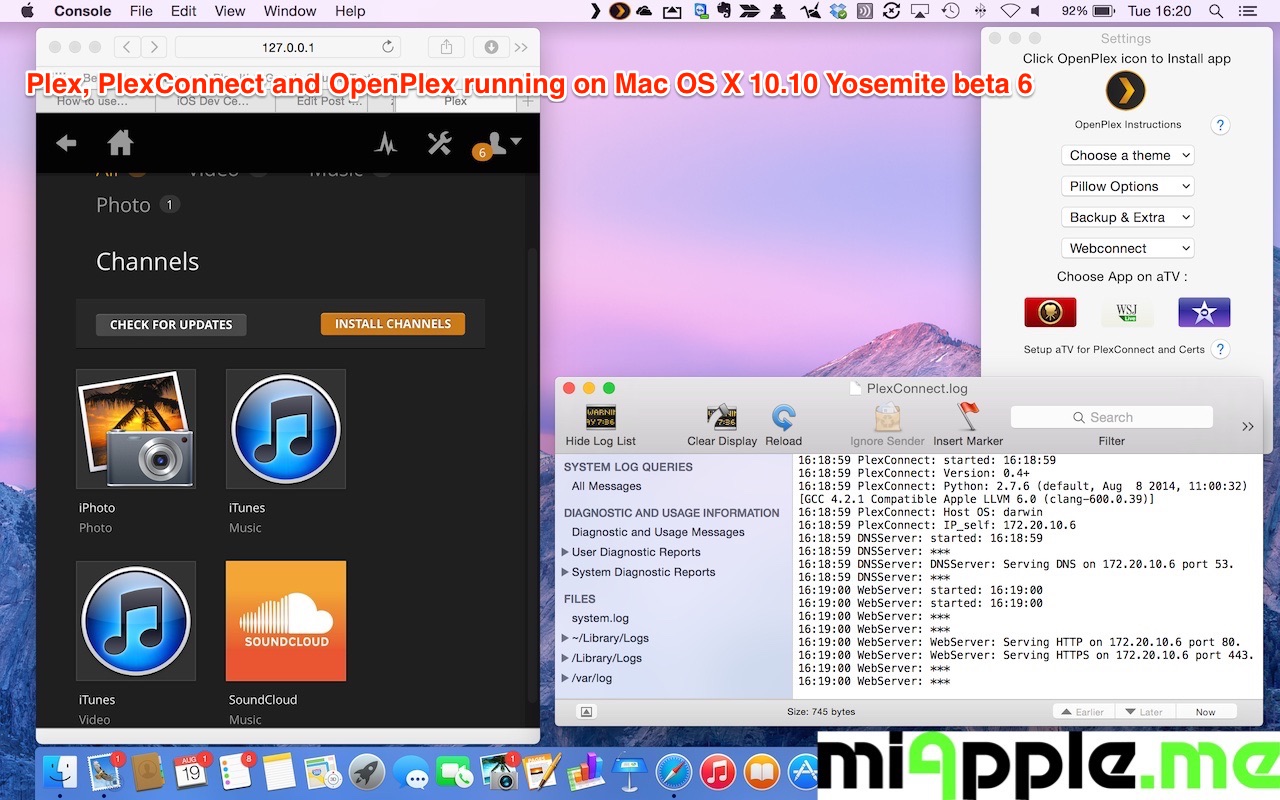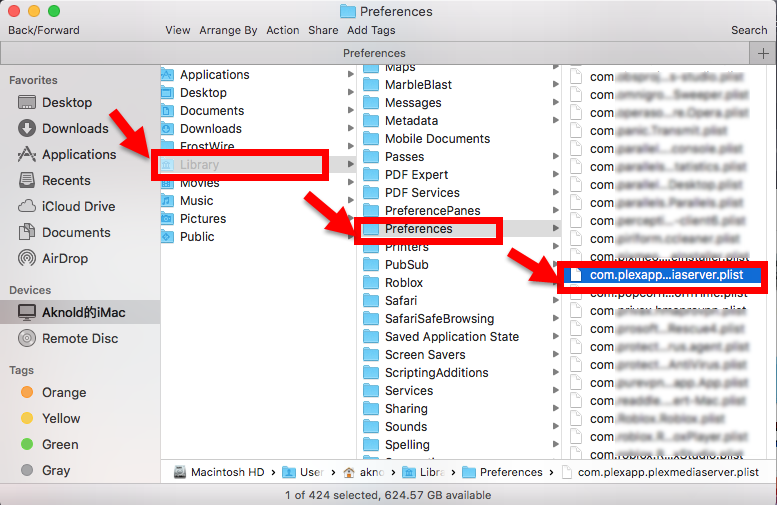

- #PLEX MEDIA SERVER FOR MAC OS SIERRA NOT INSTALLING FULL#
- #PLEX MEDIA SERVER FOR MAC OS SIERRA NOT INSTALLING PASSWORD#
- #PLEX MEDIA SERVER FOR MAC OS SIERRA NOT INSTALLING ISO#
- #PLEX MEDIA SERVER FOR MAC OS SIERRA NOT INSTALLING DOWNLOAD#
- #PLEX MEDIA SERVER FOR MAC OS SIERRA NOT INSTALLING WINDOWS#
The ISO should get saved to your desktop. Now run this script in order to create HighSierra.iso from the installer.
#PLEX MEDIA SERVER FOR MAC OS SIERRA NOT INSTALLING FULL#
If you received the 16MB version, follow the instructions here to get the full 5GB version instead. Some people will end up with a 16MB installer, and some will receive the full 5GB installer (nobody knows why yet).
#PLEX MEDIA SERVER FOR MAC OS SIERRA NOT INSTALLING DOWNLOAD#
On a Mac machine, download the macOS High Sierra installer from the App Store (this will download it into your Applications folder).Ĭheck the size of the completed download. Your Proxmox host computer must have an Intel CPU at least as new as Penryn (I believe you would need a a custom Mac kernel in order to use an AMD CPU). You also need a real Mac available in order to download High Sierra from the App Store and build the installation ISO. I’ll assume you already have Proxmox 5.1 installed. There is more documentation there which will help out with enabling extra features and diagnosing problems! Requirements This tutorial for installing macOS Sierra has been adapted for Proxmox 5 from Kholia’s GitHub project for installing into vanilla KVM. With the final release of Mojave, this tutorial is now out of date, see the new tutorial for installing Mojave instead! Recovering lost GPG public keys from your YubiKey.Installing macOS 12 “Monterey” on Proxmox 7.

Expanding the disk of your Proxmox macOS VM.Driving a 4-pin computer PWM fan on the BTT Octopus using Klipper.Installing macOS 13 Ventura Developer Beta on Proxmox 7.2.Installing macOS 13 Ventura on Proxmox 7.2.Fixing Xcode on Monterey under OpenCore Legacy Patcher.Drag your share from that view into the sidebar.In the Devices section of Finder's sidebar, click on your computer (not Macintosh HD.) You should see an entry for each drive connected to your machine, a Network entry, possibly a Remote Disc entry and of course, your share will be listed.Go to your network share - just go look at the root directory.Drag the highlighted share over to the finder sidebar.Wait for it to populate in finder (without doing this, the drag operation wouldn't work).Click on my network share in the "Shared" section of the finder sidebar.After trying everything in this thread, nothing worked.įor reference, here's what I've always done (which stopped working as of Sierra): So therefore, I think the four steps I took (above) were the fix in my situation.Īfter upgrading machines (new one running Sierra) I was setting up my standard favorites and dragging my NAS share (hosted on a Linux box) and always ended up with a "?" in the favorites. Also, before doing the above 4 steps, I had gone into the server and removed the shared folder from the File Sharing area and then re-added it, thinking that this would solve the problem it did not. This also helps me troubleshoot once in a while.
#PLEX MEDIA SERVER FOR MAC OS SIERRA NOT INSTALLING PASSWORD#
Note that I do not have the Connect dialog (Command-K in Finder) ever remember my password in the Keychain since I often want to log in as different users.
#PLEX MEDIA SERVER FOR MAC OS SIERRA NOT INSTALLING WINDOWS#
(Here, "baz" works everywhere, but "foo" and "bar" only work on my Windows machine.) $ sudo cat /etc/group (So Samba's running as root, but AFP is running as "admin".) $ cd /mnt/mysharesĭrwxr-x- 6 nobody allaccou 4096 Jun 25 02:50 fooĭrwxr-x- 11 nobody allaccou 4096 Jun 10 20:39 barĭrwxr-xr-x 12 nobody allaccou 4096 Jun 24 23:18 baz

$ ssh myremoteserverĢ4642 admin 23680 S /usr/sbin/afpd -d -F /etc/netatalk/afp.conf Thus my Windows machine ran fine, and my Mac client seemed "buggy". When other clients, such as my Windows machine accessed the share, they accessed it via Samba ( smbd), which was running as root. But the afpd (Apple File Protocol Daemon) process wasn't in the group! So it was unable to access the files. They had 750 permissions, which seemed reasonable since I only wanted the owner and appropriate groups to get access to the folders. Long version - My issue was not with my Mac, but with the remote shares. Make sure the Samba daemon and the AFP daemon have access to the shares. TL DR - Check the permissions on your remote share, too.


 0 kommentar(er)
0 kommentar(er)
